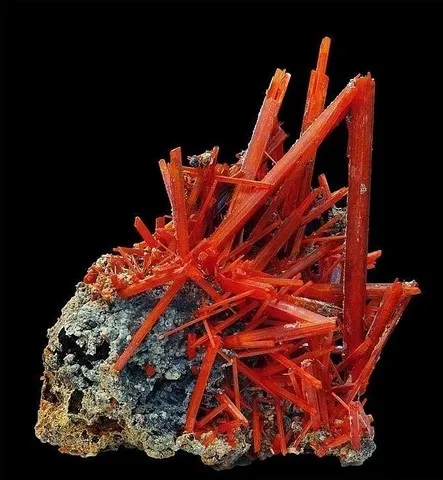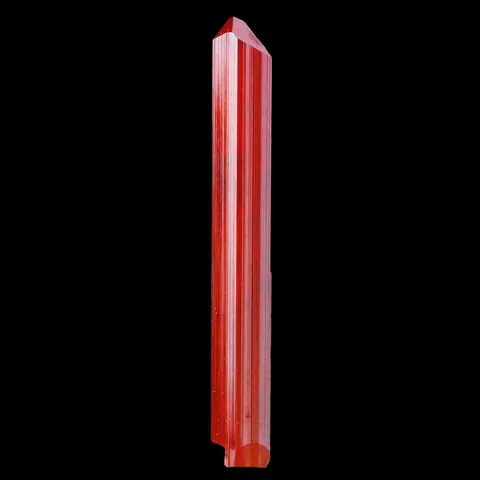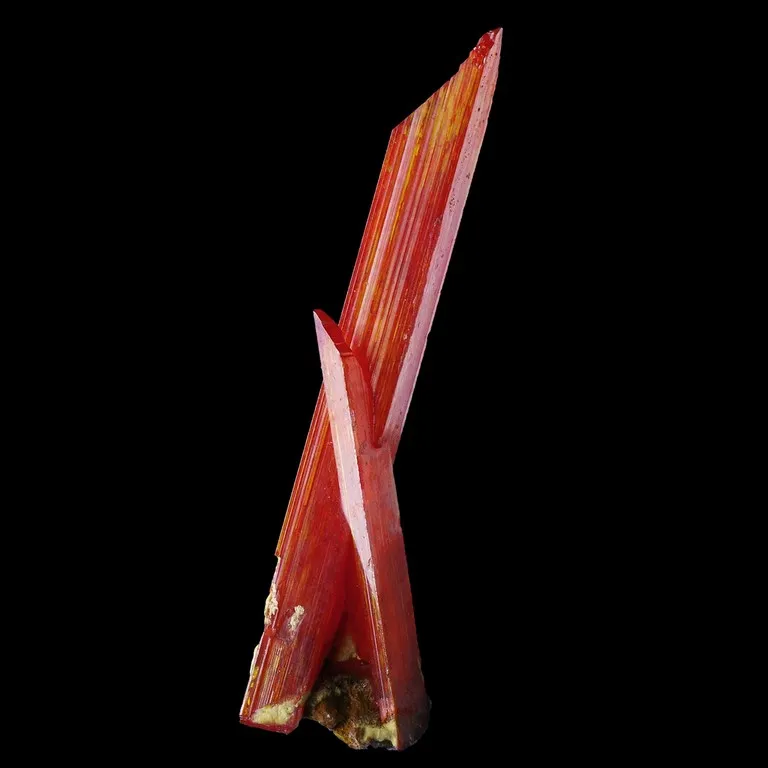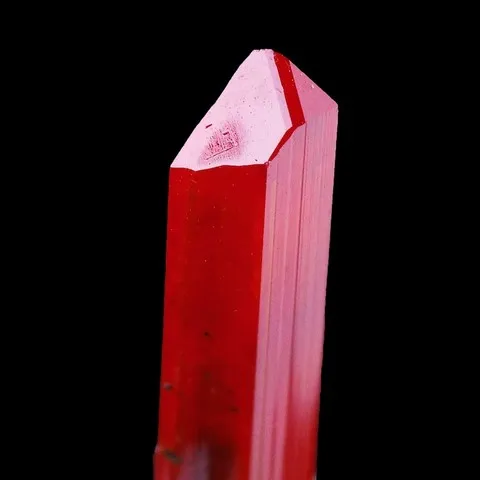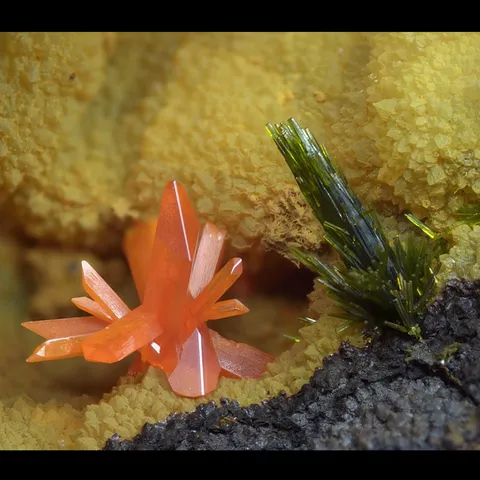CROCOITE
Class : Sulphates, chromates, molybdates
Subclass : Chromates
Crystal system : Monoclinic
Chemistry : PbCrO4
Rarity : Rare
Crocoite is a rare lead chromate, known in the oxidation zone of lead deposits, especially those located near ultrabasic chromium-rich rocks. Its name comes from the Greek krokos (saffron), because of its color. It appears in elongated to acicular prisms, sometimes hollow, with the faces of the prism often striated or grooved longitudinally. The crystals are frequently convex and sometimes take on a pseudo-octahedral appearance, but terminations are rare. Crocoite is transparent to translucent, with an adamantine luster. Its color is characteristic : vermilion red to bright orange-red, as well as its saffron streak and its high density of nearly 6. Its color fades to brick red in the light. This mineral is too rare to constitute a chromium ore, yet it was in the latter that it was discovered in 1797 by Vauquelin. Crystals are sought after by collectors.
Crocoite in the World
Crocoite in France
In France, the lead vein of Nontron provided some small crystals (10 mm maximum) with pyromorphite.
Twinning and special forms
Fakes and treatments
No false recorded for this species.
Hardness : 2.5 to 3
Density : 5.97 to 6.02
Fracture : Conchoidal
Streak : Yellow-orange
TP : Translucent to transparent
IR : 2.290 to 2.660
Birefringence : 0.370
Optical character : Baxial +
Pleochroism : Low
Fluorescence : None
Solubility : Insoluble
Magnetism : None
Radioactivity : None

